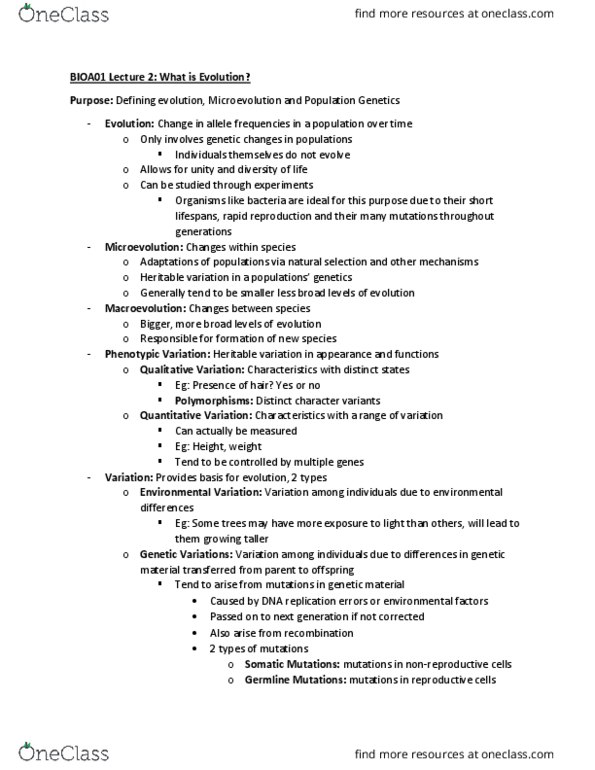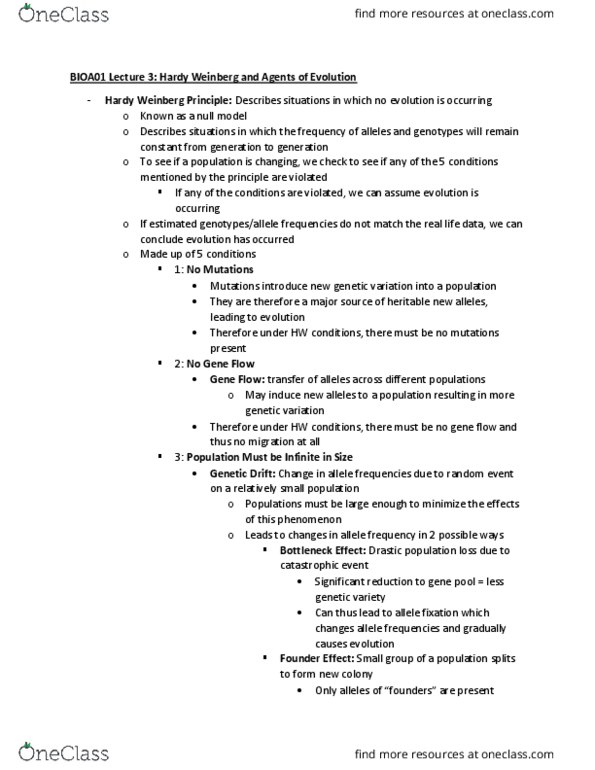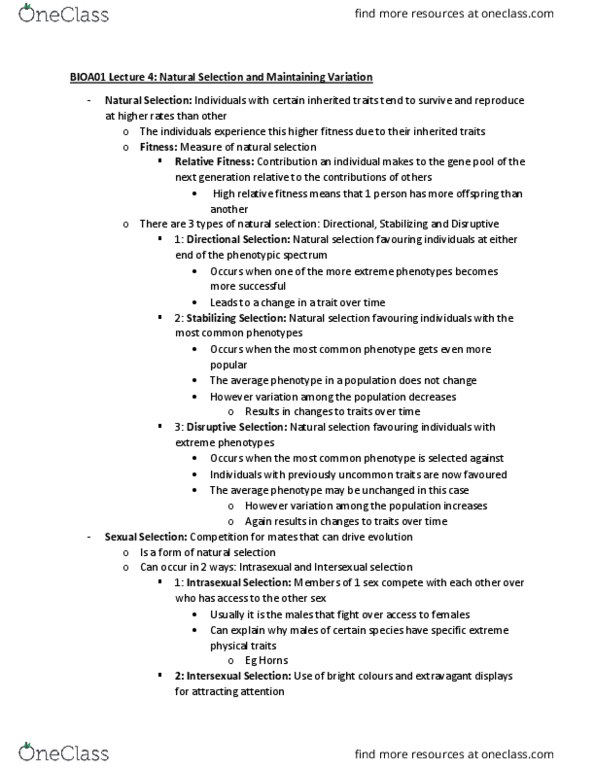BIOA01H3 Lecture Notes - Lecture 2: Microevolution, Allele Frequency, Population Genetics
BIOA01H3 verified notes
2/21View all
Document Summary
Evolution: change in allele frequencies in a population over time: only involves genetic changes in populations. Individuals themselves do not evolve: allows for unity and diversity of life, can be studied through experiments, organisms like bacteria are ideal for this purpose due to their short lifespans, rapid reproduction and their many mutations throughout generations. Microevolution: changes within species: adaptations of populations via natural selection and other mechanisms, herita(cid:271)le variation in a populations" geneti(cid:272)s, generally tend to be smaller less broad levels of evolution. Macroevolution: changes between species: bigger, more broad levels of evolution, responsible for formation of new species. Yes or no: polymorphisms: distinct character variants, quantitative variation: characteristics with a range of variation, can actually be measured, eg: height, weight, tend to be controlled by multiple genes. Influenced by 2 things: genotype: set of alleles possessed by the individual, the environment where the individual lives, can only do this when phenotype correlates to genotype.





